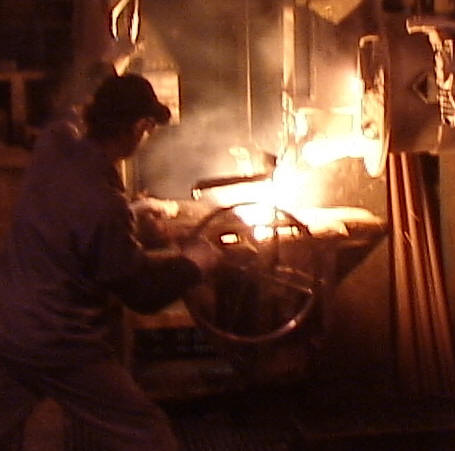 |
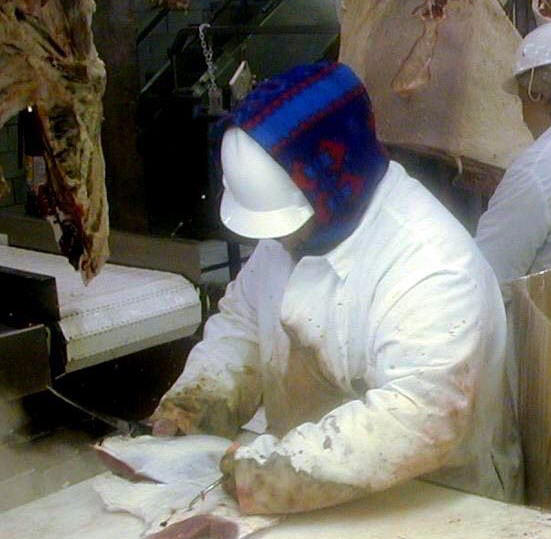 |
| Temperature extremes | |
Principles affected
- Fatigue (metabolic load)
- Environment
Background
Human performance decreases when working in hot and cold environments. In broad terms, the ideal temperature is about 71° F (20° C)1 with a range of 65°–80° F (18°–27° C)2. The greater the variance from this ideal temperature, the worse the performance.
Heating and air conditioning systems provide the best control for temperature. However, they are not feasible in many situations, such as outdoor work or in meat and poultry operations where cold temperatures are required.
Options for improvement
The following are a number of options that can be helpful in certain situations.
Evaporative coolers
 |
| Portable evaporative cooler |
Evaporative coolers work best in climates with low humidity. Small, portable coolers are available, as shown above, as are large, central units.
Air movement
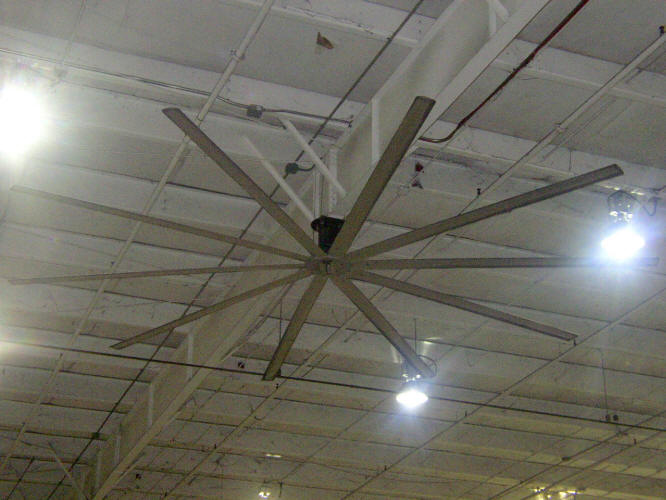 |
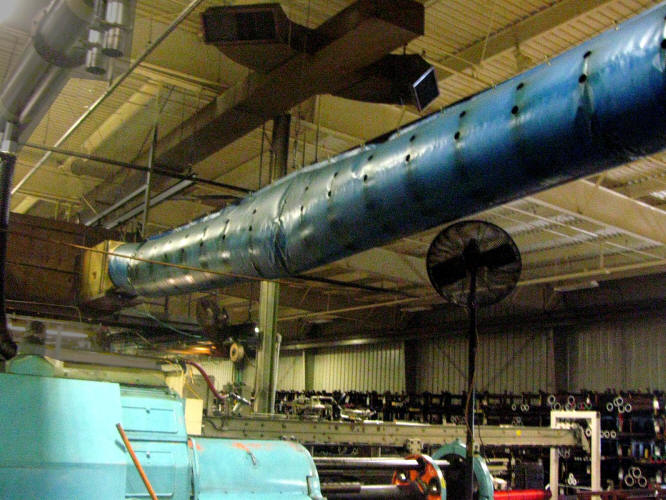 |
| Big ceiling fan | Air sock |
Huge ceiling fans are commercially available to provide air movement. Air socks can be used to distribute fresh air evenly.
Fresh air ducts
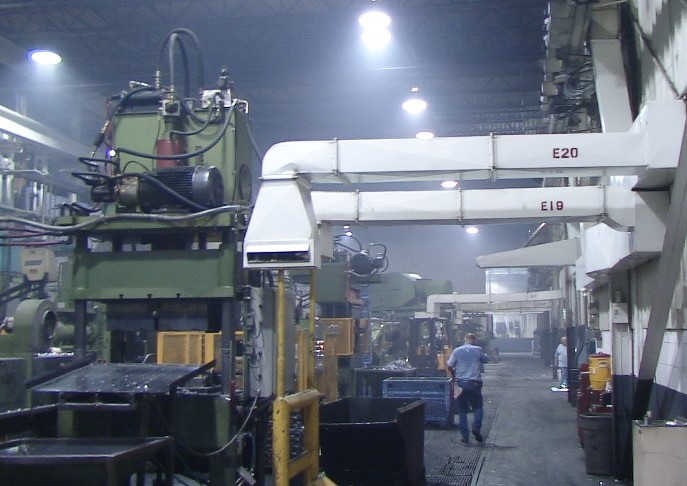 |
 |
| Fresh air supplied directly to workstation | |
A good practice is to duct fresh air directly to the workstation, taking advantage of the need to bring in a supply of fresh air. (For ventilation systems to work efficiently, fresh air needs to be supplied in the same amount as that exhausted.) Thus, the fresh air is provided at the point where it is most needed. Furthermore, duct systems are often designed so that the employee can control the amount and direction of the air flow. In summer, the air can blow directly on the employee, and in winter, blown away from the workstation.
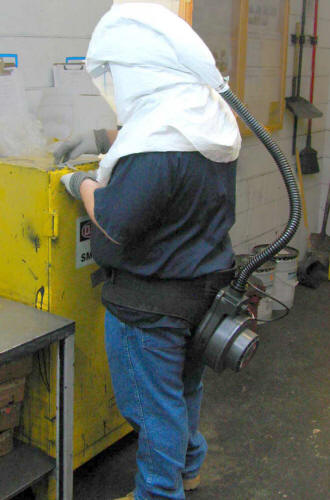 |
| Powered air respirator |
Similarly, for tasks where respirators are required, positive pressure respirators are available that can help with temperature control. Loose-fitting hoods eliminate the need to strap the respirator tightly against the face and the air is blown over the head. Additionally, “supplied air” respirators can heat or cool the incoming air.
Shields and deflectors
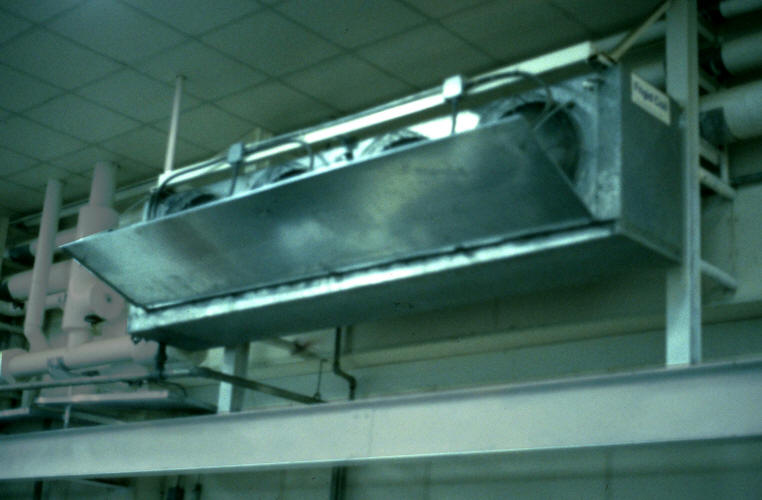 |
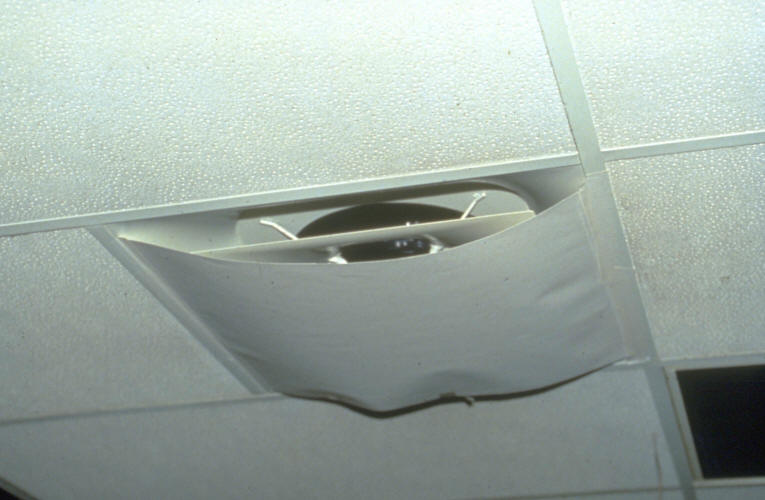 |
Defectors can be used to keep cold air from blowing directly on employees. The example above left is from a meatpacking plant where it is not possible to change the room temperature. However, it is possible to prevent “wind chill” by deflecting cold air away from employees.
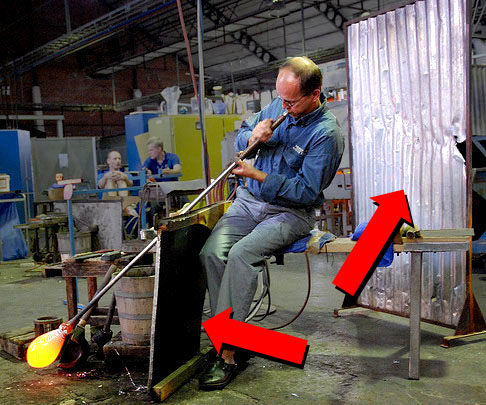 |
| Small heat shield by knees, large shield at back |
Heat shields can be used to block radiant heat. They are commonly used around industrial furnaces, typically a simple metal sheet that an employee can stand behind. Additionally, heat shields are traditionally used for tasks like glass blowing, but there is potential application in other tasks and work areas that involve heat sources.
Traditionally, heat shields have been simple sheets of metal, but newer materials have been developed that are flexible and/or lighter weight, which provides opportunity for unique needs. Heat shields do not affect air temperature, rather just block the heat that is radiated from the furnace or the hot object.
Measurements
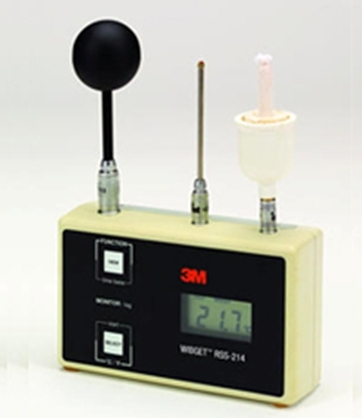
WBGT (from 3M)
Temperature is best evaluated with a wet bulb globe thermometer (WBGT). This device takes into account the key factors of radiant heat, convective heat, and evaporation, which a standard thermometer does not. The device is a bit complicated, but with training and experience can be performed by a competent person.
Studies
1Seppänen, O., Fisk, W.J., and Lei, Q.H. 2005 Effect of temperature on task performance in office environment, 5th International Conference on Cold Climate Heating, Ventilating, and Air Conditioning. Moscow.
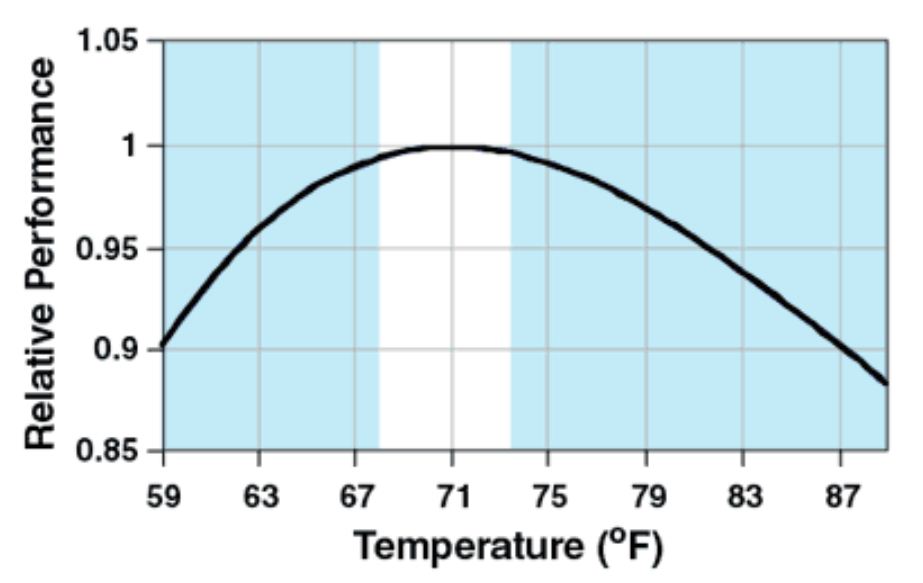
The graph shows decreasing performance at temperatures outside the ideal. The graph is taken from the study above, conducted in call centers and similar office tasks where speed and accuracy can easily be quantified. See also Impacts of Indoor Environments on Human Performance and Productivity
2Pilcher, J.J., Nadler, E. and Busch, C. 2002. Effects of hot and cold temperature exposure on performance: a meta-analytic review. Ergonomics 45(10) 682-698.
